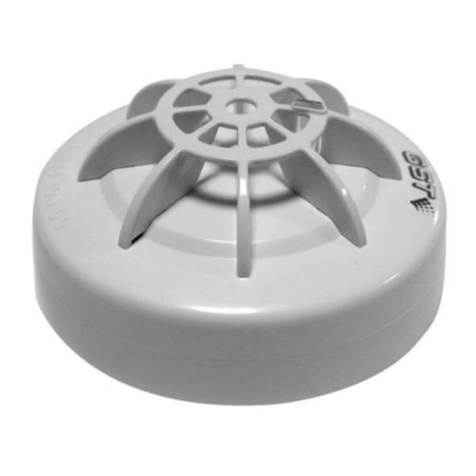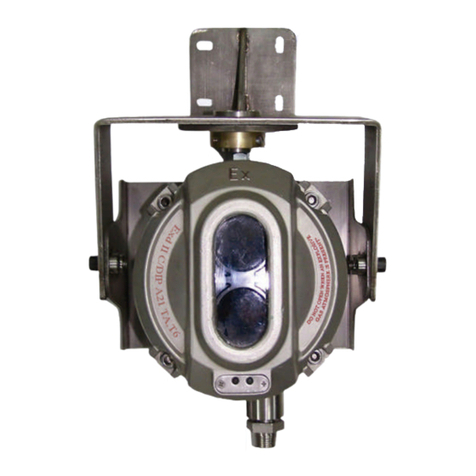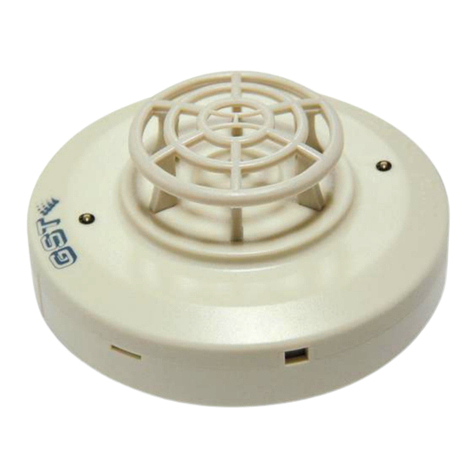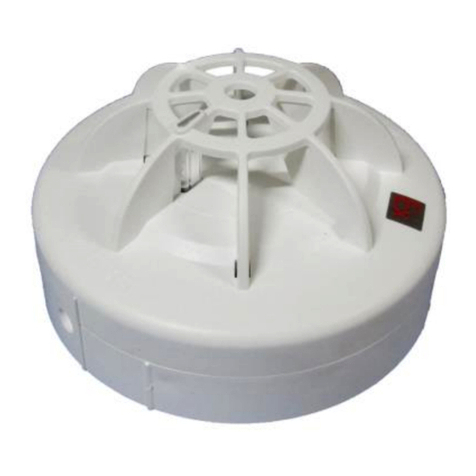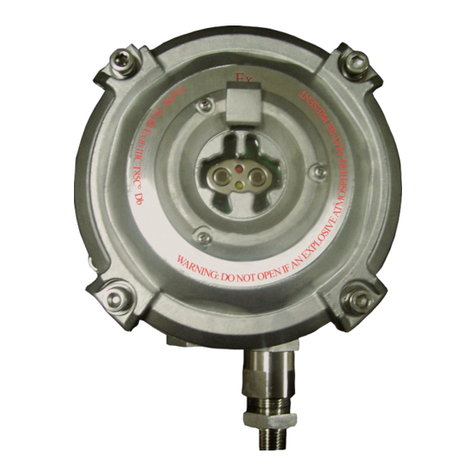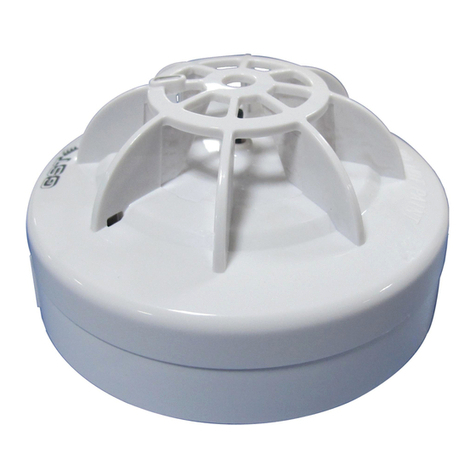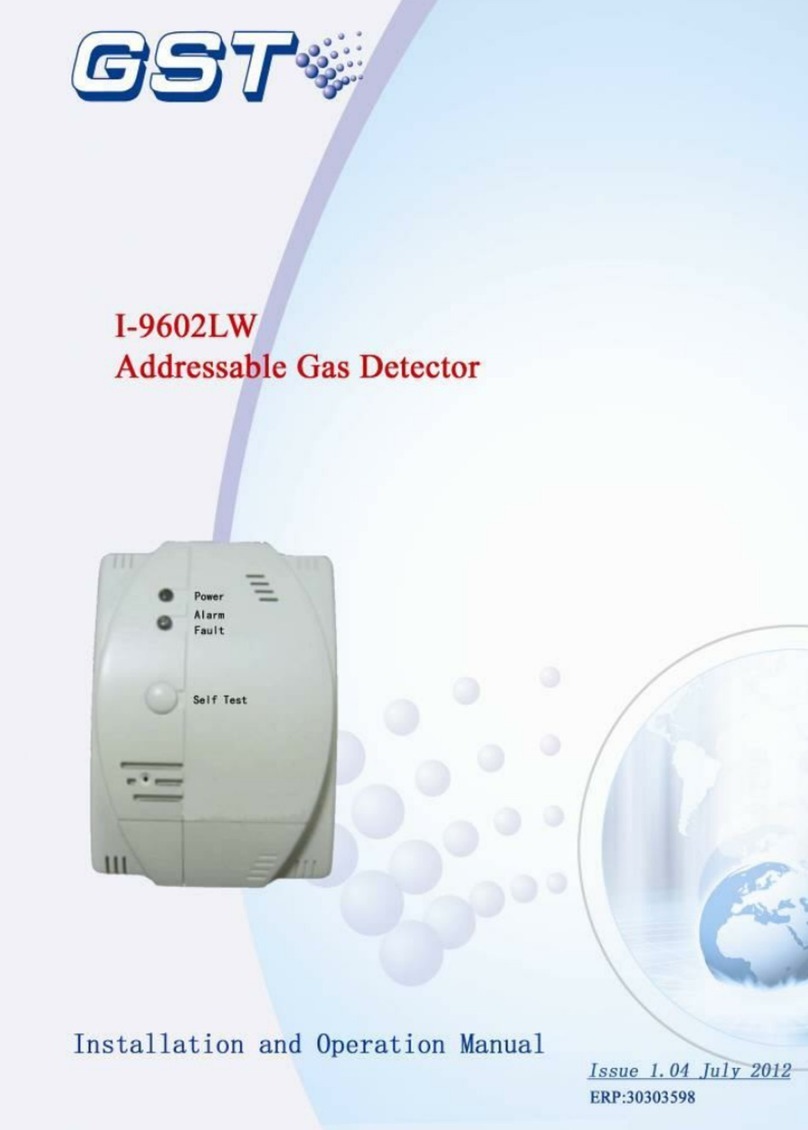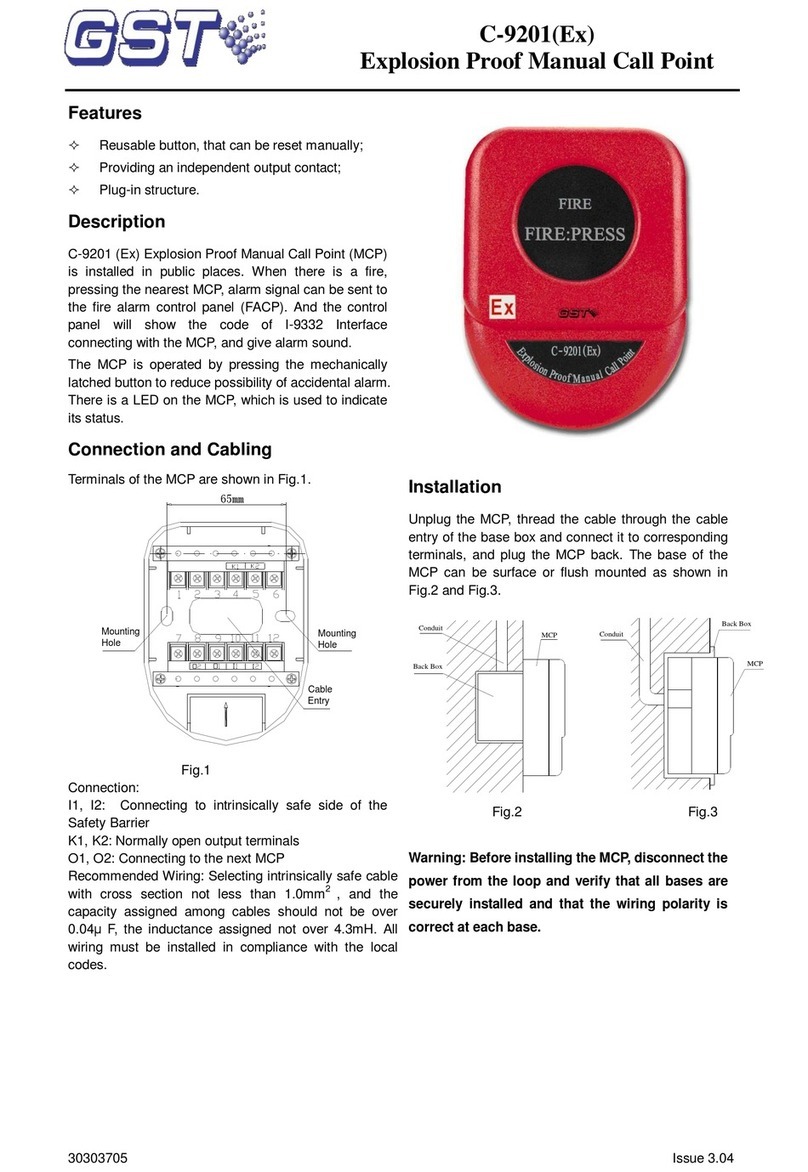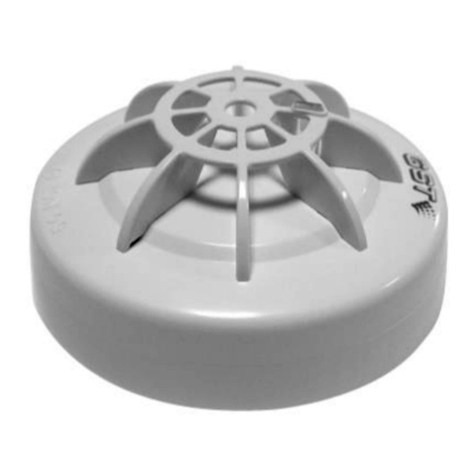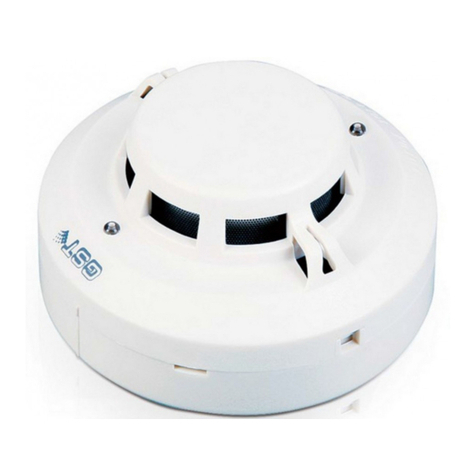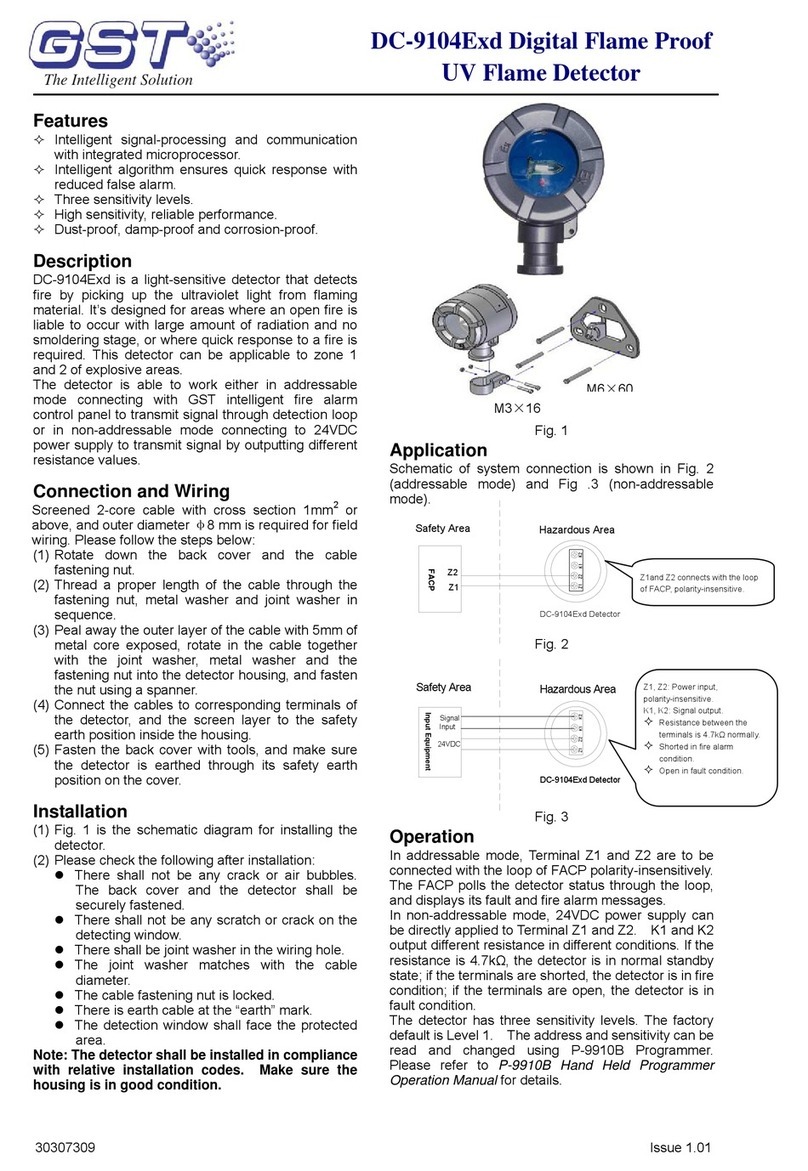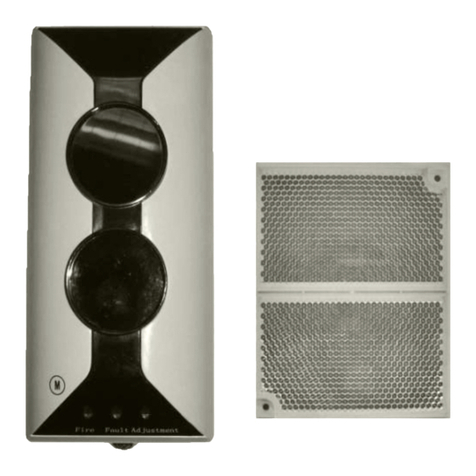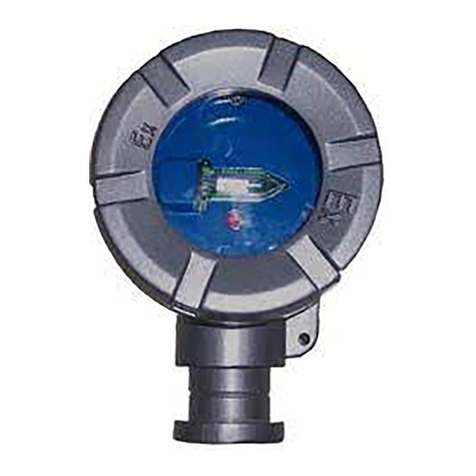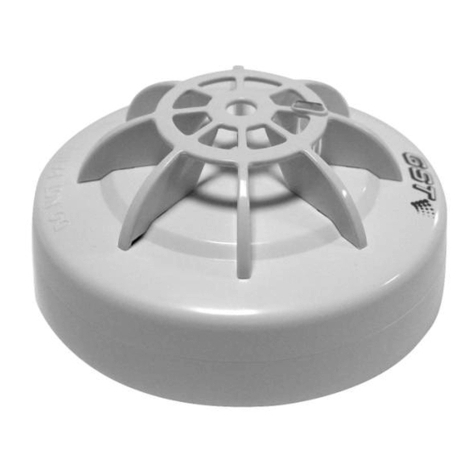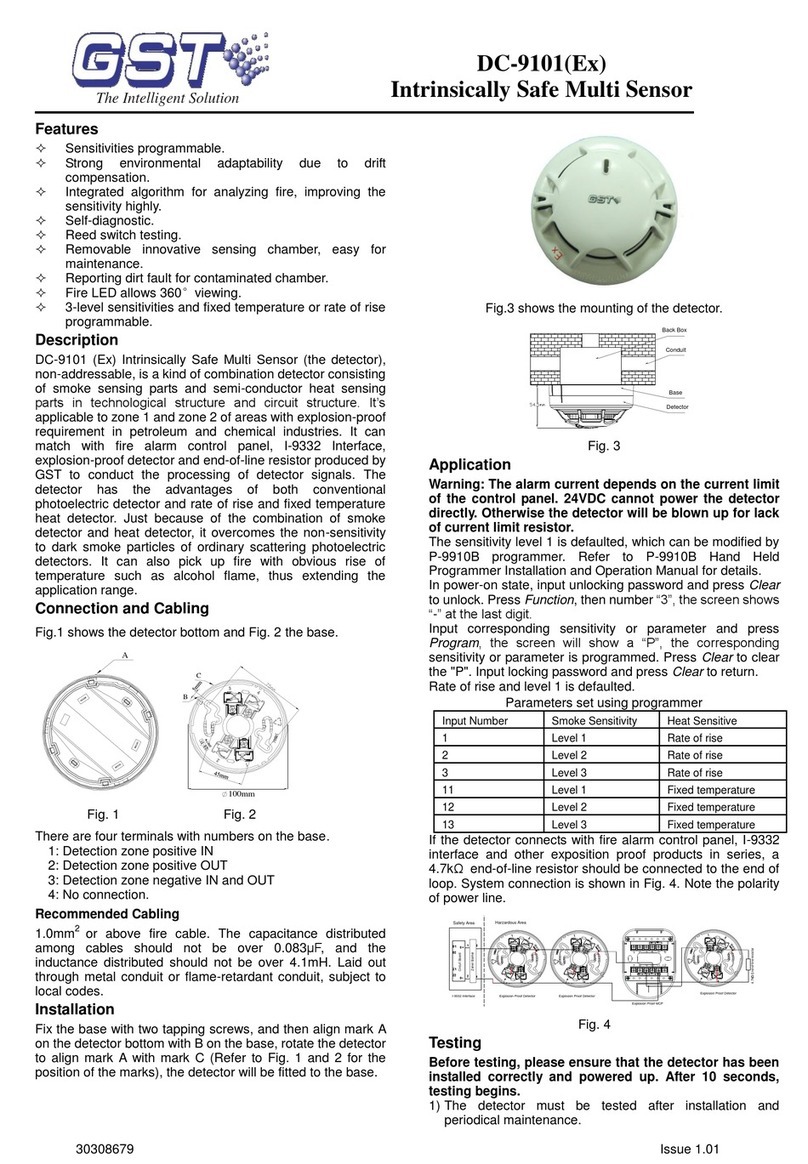
HTTP://WWW.HOMBI.RU
C-9105R
Conventional Reflective Beam Detector
Installation and Operation Manual The Intelligent Solution
1
I Overview
C-9105R Conventional Reflective Beam Detector (hereinafter called
the detector) is a non-addressable reflective infrared beam smoke
detector, which must be used together with a reflector. The number
of reflector(s) to be used (one or four) depends on the distance from
the detector.
With excellent built-in microprocessor, the detector has strong ability
of analysis and judgment. The detector can automatically carry out
system adjustment, compensation of variation of ambient data, and
judgment of fire and fault through fixed algorithm, and indicate these
states by LED and signal output terminals. With new and reasonable
design, attractive appearance, flexible adjustment and alignment
method it’s easy to install and adjust. The sensitivity of the detector
can be set through hand held programmer in field, decreasing the
demand for cleanliness of field conditions, and enlarging application
areas. The detector is applicable to historical buildings, warehouses,
large storages, shopping malls, leisure centers, exhibition halls,
hotel lobbies, printing houses, clothing factories, museums and
prisons etc, as well as places where slight smoke particles exist.
II Features
(1) Wide operating voltage range, big monitoring areas.
(2) Combination of the emitting and receiving part makes mounting
easy and optical pathway accurate.
(3) Built-in microprocessor enables intelligent judgment of fire
alarm and fault.
(4) The detector can calibrate automatically, which ensures that
one person complete adjustment in short time. It’s also






